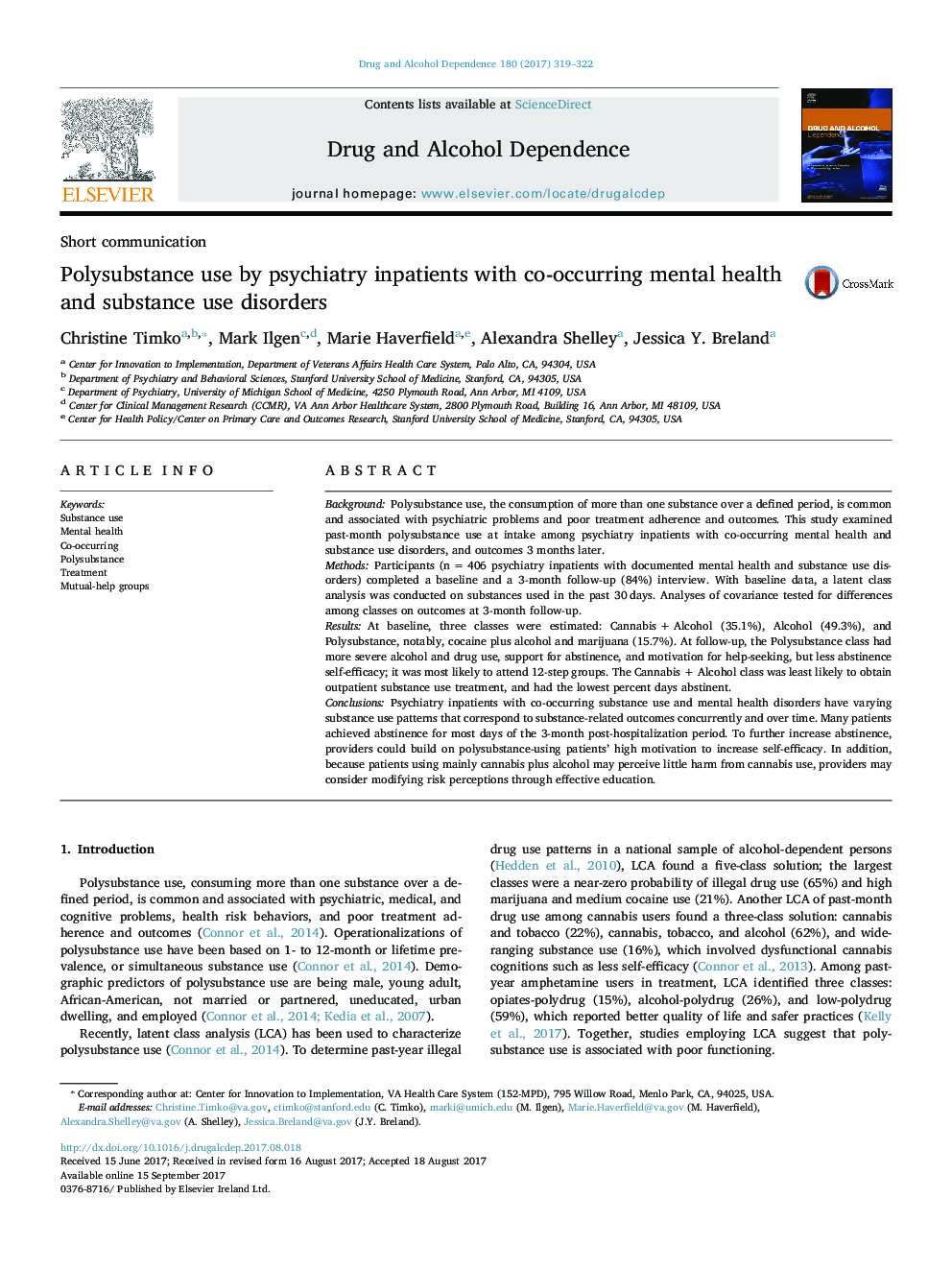| کد مقاله | کد نشریه | سال انتشار | مقاله انگلیسی | نسخه تمام متن |
|---|---|---|---|---|
| 5119890 | 1486111 | 2017 | 4 صفحه PDF | دانلود رایگان |
- Examined polysubstance use by psychiatry inpatients with co-occurring disorders.
- Latent class analysis estimated 3 classes: Cannabis + Alcohol, Alcohol, Polysubstance.
- At follow-up, polysubstance users were more severe but also motivated and help-seeking.
- Days abstinent was lowest for Cannabis + Alcohol (72%) and highest for Alcohol (87%).
BackgroundPolysubstance use, the consumption of more than one substance over a defined period, is common and associated with psychiatric problems and poor treatment adherence and outcomes. This study examined past-month polysubstance use at intake among psychiatry inpatients with co-occurring mental health and substance use disorders, and outcomes 3 months later.MethodsParticipants (n = 406 psychiatry inpatients with documented mental health and substance use disorders) completed a baseline and a 3-month follow-up (84%) interview. With baseline data, a latent class analysis was conducted on substances used in the past 30 days. Analyses of covariance tested for differences among classes on outcomes at 3-month follow-up.ResultsAt baseline, three classes were estimated: Cannabis + Alcohol (35.1%), Alcohol (49.3%), and Polysubstance, notably, cocaine plus alcohol and marijuana (15.7%). At follow-up, the Polysubstance class had more severe alcohol and drug use, support for abstinence, and motivation for help-seeking, but less abstinence self-efficacy; it was most likely to attend 12-step groups. The Cannabis + Alcohol class was least likely to obtain outpatient substance use treatment, and had the lowest percent days abstinent.ConclusionsPsychiatry inpatients with co-occurring substance use and mental health disorders have varying substance use patterns that correspond to substance-related outcomes concurrently and over time. Many patients achieved abstinence for most days of the 3-month post-hospitalization period. To further increase abstinence, providers could build on polysubstance-using patients' high motivation to increase self-efficacy. In addition, because patients using mainly cannabis plus alcohol may perceive little harm from cannabis use, providers may consider modifying risk perceptions through effective education.
Journal: Drug and Alcohol Dependence - Volume 180, 1 November 2017, Pages 319-322
